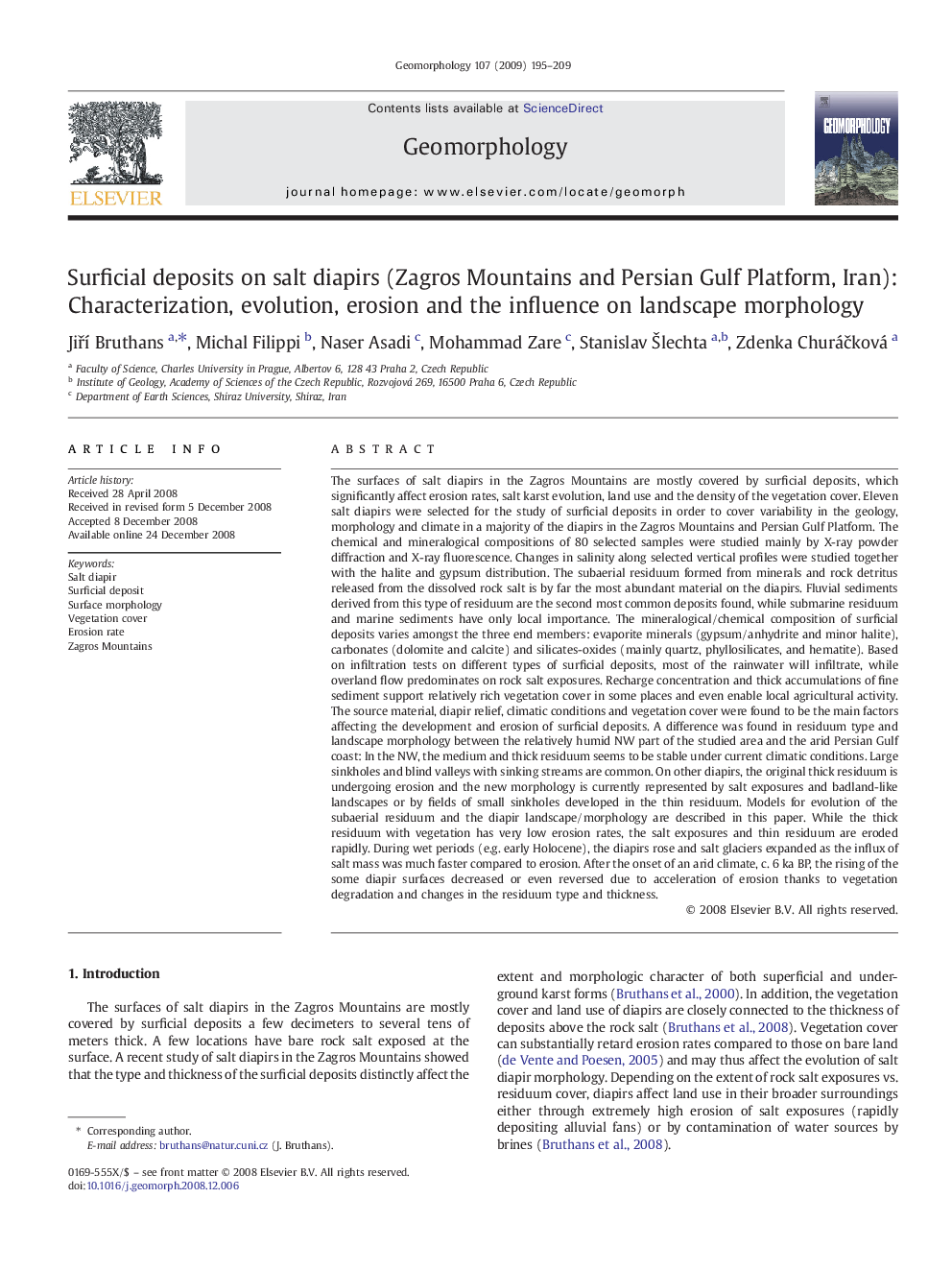| کد مقاله | کد نشریه | سال انتشار | مقاله انگلیسی | نسخه تمام متن |
|---|---|---|---|---|
| 4686399 | 1635543 | 2009 | 15 صفحه PDF | دانلود رایگان |

The surfaces of salt diapirs in the Zagros Mountains are mostly covered by surficial deposits, which significantly affect erosion rates, salt karst evolution, land use and the density of the vegetation cover. Eleven salt diapirs were selected for the study of surficial deposits in order to cover variability in the geology, morphology and climate in a majority of the diapirs in the Zagros Mountains and Persian Gulf Platform. The chemical and mineralogical compositions of 80 selected samples were studied mainly by X-ray powder diffraction and X-ray fluorescence. Changes in salinity along selected vertical profiles were studied together with the halite and gypsum distribution. The subaerial residuum formed from minerals and rock detritus released from the dissolved rock salt is by far the most abundant material on the diapirs. Fluvial sediments derived from this type of residuum are the second most common deposits found, while submarine residuum and marine sediments have only local importance. The mineralogical/chemical composition of surficial deposits varies amongst the three end members: evaporite minerals (gypsum/anhydrite and minor halite), carbonates (dolomite and calcite) and silicates-oxides (mainly quartz, phyllosilicates, and hematite). Based on infiltration tests on different types of surficial deposits, most of the rainwater will infiltrate, while overland flow predominates on rock salt exposures. Recharge concentration and thick accumulations of fine sediment support relatively rich vegetation cover in some places and even enable local agricultural activity. The source material, diapir relief, climatic conditions and vegetation cover were found to be the main factors affecting the development and erosion of surficial deposits. A difference was found in residuum type and landscape morphology between the relatively humid NW part of the studied area and the arid Persian Gulf coast: In the NW, the medium and thick residuum seems to be stable under current climatic conditions. Large sinkholes and blind valleys with sinking streams are common. On other diapirs, the original thick residuum is undergoing erosion and the new morphology is currently represented by salt exposures and badland-like landscapes or by fields of small sinkholes developed in the thin residuum. Models for evolution of the subaerial residuum and the diapir landscape/morphology are described in this paper. While the thick residuum with vegetation has very low erosion rates, the salt exposures and thin residuum are eroded rapidly. During wet periods (e.g. early Holocene), the diapirs rose and salt glaciers expanded as the influx of salt mass was much faster compared to erosion. After the onset of an arid climate, c. 6 ka BP, the rising of the some diapir surfaces decreased or even reversed due to acceleration of erosion thanks to vegetation degradation and changes in the residuum type and thickness.
Journal: Geomorphology - Volume 107, Issues 3–4, 15 June 2009, Pages 195–209